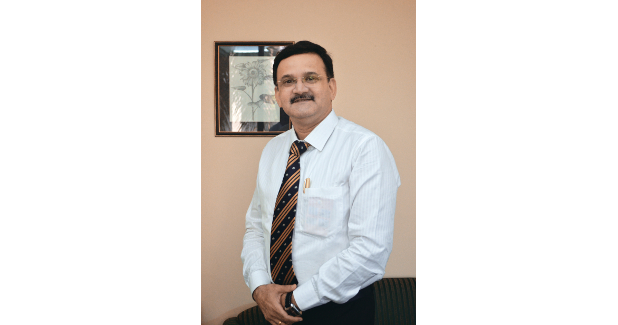
A.T.E. is present in all the segments of TT: GV Aras
The technical textiles and nonwovens projects were at quite low level in the last couple of years. Not much of investment has happened in this area, the major reasons have been that investors are unsure.
The technical textiles and nonwovens projects were at quite low level in the last couple of years. Not much of investment has happened in this area, the major reasons have been that investors are unsure about the marketing of these products and about the viability of the project in view of high capital investment.
Consumption of technical textiles in India is significantly lower as compared to other countries. Per capita consumption of technical textiles is 1.7 kg vis-a-vis 12 kg in developed countries. Most of the consumption of locally-produced products is for domestic consumption. Geotech, agrotech, packtech and mobiltech are the segments that hold good potential in India. In view of Government’s thrust on infrastructure as well as on agriculture, the consumption of technical textiles in these sectors is expected to increase gradually. Similarly many of the technical textiles used in automobile sector can be manufactured locally as import substitutes. Since the automobile production in India is increasing year after year, this segment also has good scope for growth.
A.T.E. is present in almost all the segments of technical textiles for supply of equipment for manufacturing of spun lace, needle punched nonwovens, warp knitted technical textiles as well as for coating and lamination of different substrates. We represent leading European manufacturers like Truetzschler Nonwovens, Karl Mayer, Monforts and Fongs Group in technical textile segment. Being in this field for more than 20 years, we have acquired certain domain knowledge in technical textiles field which we are able to utilize in guiding our customers for right investments.
Techtextil Frankfurt is an annual event which many people from the technical textile field eagerly look forward to. It serves as a platform for sharing new innovations and technologies developed by the suppliers as well as for exhibiting potential product baskets by the technical textile producers. It’s a place for confluence of industry, research and startups. This exhibition is considered as the biggest event for the technical textiles and nonwovens industry across the world. In that comparison, Techtextil India is a much smaller local event. India still is at a nascent stage as far as technical textile industry is concerned due to which this exhibition has a limited potential. However the conference which is organised during the Techtextil India normally brings in lot of value on the table for the industry representatives as papers are presented by many leading speakers and experts from the field.
Government can certainly play an active role in increasing the consumption of geo textiles and agro textiles. In fact, the Government is focusing on developing the technical textile sector by providing incentives for setting up manufacturing capacities such as 15 per cent capital subsidy under ATUFS, import duty reduction from 5 per cent to 2.5 per cent on specialty fibres used in technical textiles manufacturing. It has also promoted a scheme for usage of geo textiles in North East region. The condition of most of the roads in the country is bad as they are not using geo textiles. Most developed and developing countries are using geo textiles widely in road construction. If Government can make the usage of geotextiles mandatory for all the contractors for road construction, the industry will grow leaps and bounds. Government can create an environment to encourage investors to invest in technical textiles especially for import substitute products. Industry should also focus on creating awareness amongst the farming community about the usage of agrotech products. Industry and Government together must take initiative in setting the standards related to technical textiles usage which will be helpful for the industry as lack of proper quality standards are restricting exports from India. The technical textiles sector has huge untapped potential which can be exploited only if both industry and government work together. The industry should expand their horizon to the global market rather than just thinking about the local market.
Today A.T.E. is uniquely positioned in the technical textiles segment as a technology supplier due to its strong presence in all the product segments such as spun lace, needle punch, and chemical bonded as well as in woven, warp knitted and functional textiles. We are also fully equipped to help customers in setting up complete projects for carpets as well as active wear or sportswear which are growing segments. Our product portfolio is nearly complete in the technical textiles and we do not contemplate adding any new agencies at this juncture.



